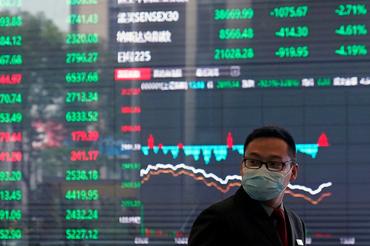Are fears justified of world economy losing $1trillion due to coronavirus?
What began a few weeks ago as relatively tepid concerns regarding the spread of coronavirus from China’s Hubei province and impacting global growth due to disruptions in supply chains, has now snowballed into one of the biggest threats to global growth. Investors around the world are now deeply worried about the extent of the slowdown due to coronavirus. The virus has now reached at least 56 countries, which means around the world millions of people will now stay away from shopping malls, restaurants, that is spending more on outdoor activities—all leading to a huge contraction in global growth. In this scenario, companies are now being forced to readjust their profit expectations, economists are now lowering their forecasts for growth and policymakers are now bracing for the possibility of another round of quantitative easing or other such options to provide a fresh impetus to growth.
Even now, things look quite grim. As per Moody’s Analytics there is a 40% chance that global economy could slip into a recession, which is a very high probability. Clearly, markets have sensed this and investors are now turning risk averse. It was an awful week for markets around the globe. While the Dow Jones plummeted 12%, in Europe, stocks in Britain dropped 11% and the German index was down 12%. Asian markets mirrored the sentiment as well, where the Japanese index fell 10% and South Korean stocks took an 8% shave. There was bloodbath on Dalal Street as well where investors lost a whopping Rs 11.84 lakh crore this week.
There seems to be no improvement in the immediate future—the reason for a prediction of an erosion of at least $1 trillion of global wealth.
Given that China is now central to global supply chains, around the world, impact will be felt across the board—from manufacturing to consumption.
Indian manufacturing will also be severely impacted since India imports a large amount of capital goods and shipment delays, quite naturally, will cause widespread delays.
But what will be very important to note would be the response that will come in from policymakers around the world. While US President Donald Trump has already made a statement hoping the Fed looks into providing some booster shot to the American economy, there have been few calls for policy intervention until now. And the reason for that has been the very limited options that are available right now. Following the 2008 meltdown, caused by the collapse of banking systems, Central Banks started massive easing of interest rates to pump money and boost demand, something that India also did (then Finance Minister Pranab Mukherjee had announced the whole easy money policy that led to money flowing into industries and kick-start growth). And what followed was a cycle of global boom.
But what worked in 2008 is unlikely to have the same impact in 2020. 2008 was a demand-led crisis and cutting interest rates led to people having more money into their pockets and started the cycle of growth. But this time around, there is little that Central Bankers can do. The 2020 global economic crisis is a supply issue, since China is the world’s factory and its production lines are completely snapped right now. Chinese workers are staying away, factories are shut or are working at sub-optimal levels and shipments (if at all goods are being shipped) are massively delayed.
Add to this the consumption impact due to people staying indoors to prevent any possibility of getting contracted.
But the worst is yet to come in. The Chinese New Year holiday meant companies had a certain buffer of their inventory pile-up and that is expected to last for about 4-5 weeks, which may now be almost exhausted. It is from March that the real production snags will come to light. With no inventory coming from China, production lines across India, Europe and US will start getting seriously hampered. And there is little that Central Banks will be able to offer in terms of policy intervention to lift the economy.
Everything will hinge on the ability of companies to identify alternate sources of raw materials, even if to partially off-set the impact of China’s shuttered factories.
The fears of an economic slowdown are not just real, but some would say, still underestimate the impact China has on world trade (China accounts for 16% of world trade, up from 4% during SARS epidemic). The shave on global growth may not be just a trillion dollars, but even more. And while coronavirus couldn’t have been anticipated, its aftermath is bound to lead to a global hunt for alternate supply chains.
Gaurie Dwivedi is a senior journalist covering economy, policy and politics.

